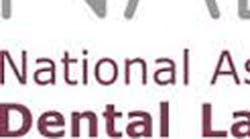Ensuring quality restorations with impending reduction of dental laboratories
“US dental laboratories that adhere to dental laboratory standards not only protect the health of the patient, but they also protect the dentist,” said Gary Iocco, co-chair of the NADL Public Awareness Committee. “With the reduction of labs, it is important now more than ever that dentists make sure that the dental restorations they use meet minimum dental laboratory standards.”
_______________________________
RELATED
Communication vs. Collaboration between dentist and dental lab
A better relationship with your dental lab will make practice more profitable and less stressful
The future of the dental lab industry: The lab industry ain't never gonna be the same
_______________________________
NADL promotes safe dental restoration practices through its “What’s in Your Mouth?” campaign, designed to give patients, dentists, and the dental laboratory community the information necessary to make informed decisions about their dental needs.
Here are five ways dentists can ensure their patients are getting the quality restorations they deserve.
1. Find out if your state requires minimum dental laboratory standards here. Most state dental practice acts do not regulate or set standards for operation for dental laboratories or dental technicians. It is important that dentists seek to work with individuals and companies that have voluntarily achieved “third party verification” of their skills, knowledge and operating standards.
2. Find a certified dental technician (CDT) to work with here. (Click on the CDT logo under “Show”.) The ability of dentists to deliver a high standard of care in restorative and cosmetic dentistry is enhanced by working with a formally educated, trained, or certified dental technician. Dental technicians bring considerable experience and subject matter expertise in the areas of dental materials, technology utilization, shade verification and implant dentistry. Dental technicians are true partners in helping dentists grow their practice. Dental technicians, although generally operating behind the scenes in the oral health team, are a crucial part of ensuring the delivery of quality dental care.
3. Find a certified dental laboratory to work with here. Find a Dental Appliance Manufacturers Audit System (DAMAS) accredited laboratory here. Dental restorations increasingly are being imported from countries like China, India, and Vietnam. It is crucial for dentists to be informed of where exactly they are getting their restorations. The CDL program promotes transparency in dentistry by requiring point of origin disclosure as part of the certification process.
The DAMAS specifications provide a clear-cut process for improving documentation in every facet of laboratory operations, including dental prescriptions/work authorizations; patient contact materials; subcontractor/supplier agreements; material and equipment purchases; employee training; maintenance and calibration of equipment; labeling; customer complaints; and material traceability.
4. Stay up-to-date on legislative updates here. This will help dentists and their staff become a go-to source for patients’ restoration questions.
5. If you are working with a CDT and CDL, inform your patients that they are receiving quality dental restorations. Patients should have access to their personal dental records that outline the patient contact materials that are used in their restorations and also in what country such finished restorations are manufactured. Patients should be aware that approximately 25% of domestic dental laboratory sales and 38% of actual restorations are manufactured overseas. There are 42 countries that currently have foreign dental laboratories registered with the US Food and Drug Administration.
For information on the campaign, please visit our website.

